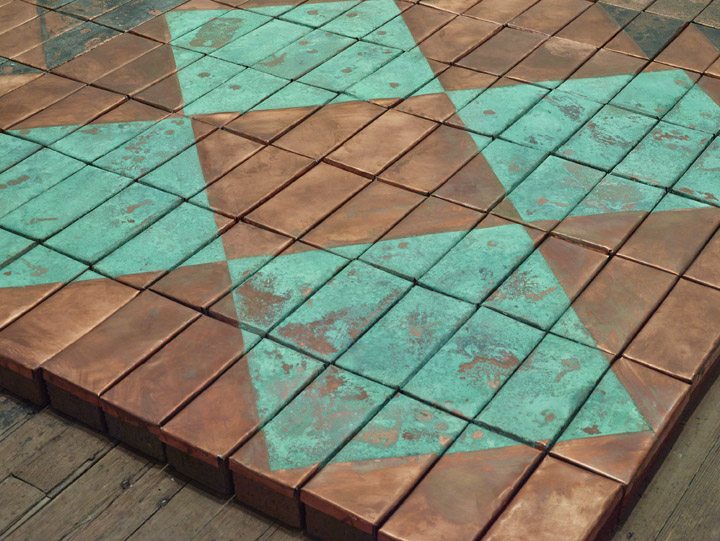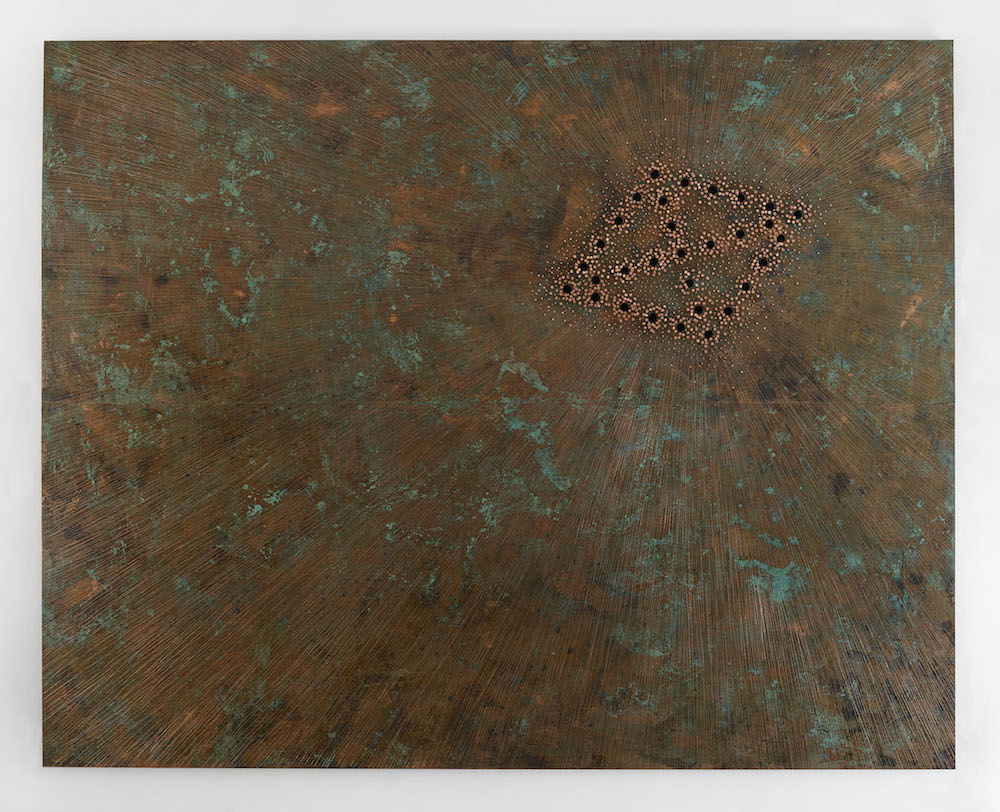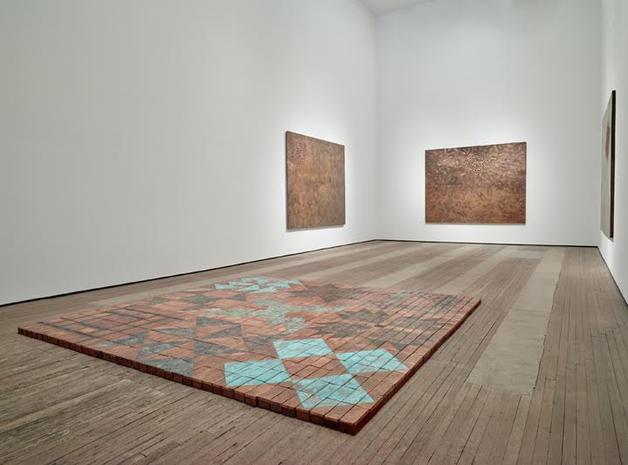Jamaican born artist Nari Ward is a natural chronicler. A systematic collector of urban materials, Ward triumphs found, everyday objects as concealed symbols of latent history and personal journeys. This week, New York’s Lehmann Maupin opened a solo exhibition of his latest works, Breathing Directions.
The dramatic sculptures in this exhibition hail from Ward’s visit to a church in Georgia, where the artist found himself standing on a highly charged piece of American history — hole riddled floorboards. Cut into the floorboards in the 1850s and 60s, the holes formed an integral breathing channel in part of a secret network of underground routes for slaves to clandestinely escape from slave owners. In Breathing Directions, Ward traces how these seemingly insignificant details of every day surroundings can at once reveal voices lost to history.
This body of work is certainly in keeping with Ward’s many previous pieces, that are often playful sculptures made from urban findings, such as his awkwardly piled collection of disused prams in Amazing Grace, or the delicately arranged collection of disparate wheels in Land and Landings. Ward traditionally offers a gritty take on issues of loss, race and poverty.
In Breathing Directions, Ward leaves a louder trace of his performative gesture within his sculptures — puncturing geometric patterns into copper and applying patena to the soles of his feet, before stepping onto the sculptures. These punctured geometric patterns form the focal point of Breathing Panels where, alongside his footprints, and punctured holes, Ward seems to have scored an impression of sun-like rays onto the copper. It feels like the viewer is looking up through the breathing holes within the church floorboards, whilst rays of light shine ever-so-hopefully through into the darkness.
In Spellbound, Ward presents a disused upright piano, reminiscent of the kind used in school assemblies or ballet classes. The piano stands in an isolated space, behind a bare blue bulb, which dangles on a wire from the gallery ceiling. Embedded into the heavily varnished wood of this piano are hundreds of nails, upon which hang hundreds of individual keys. For Ward, these symbolise latent histories and disused places. The keys hang expectantly on their individual nails, as if waiting to be collected by their owner and popped back into their rightful place — in a jeans pocket, or on a keyring. But they seem to be ultimately forgotten, or no longer acknowledged, and continue just to hang on their nails silently.
This explosive feeling of growing latency is manifested throughout Breathing Directions. Ward demonstrates that whilst forgotten or no longer acknowledged, objects resiliently exist. So too, he points out, does a conveniently forgotten national history.
Nari Ward: Breathing Directions is showing at Lehmann Maupin until 1 November










